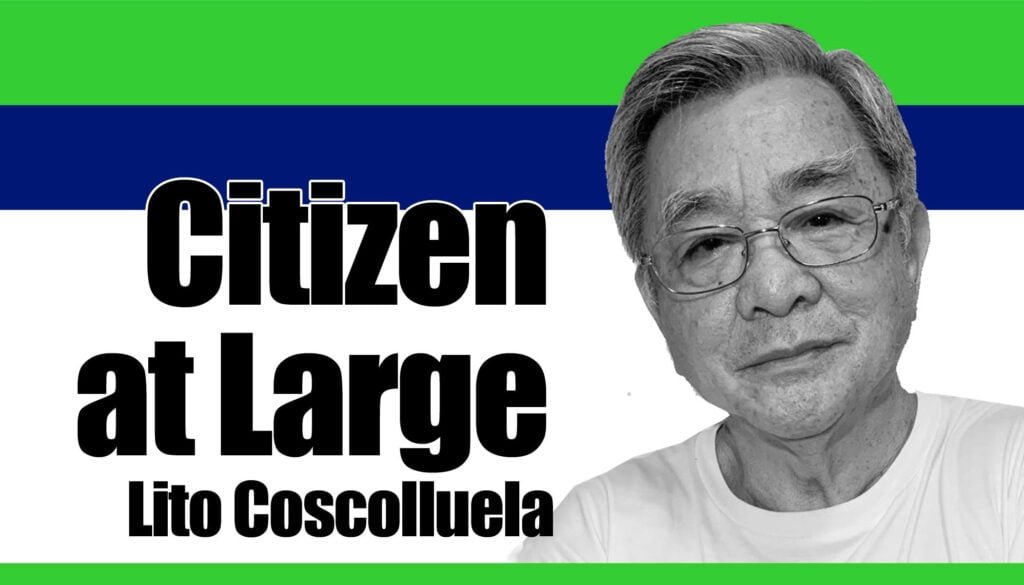“We can only hope and pray that our legislators will have the wisdom, responsibility and sense of independence to help craft a truly responsive fiscal road map for 2021.”

Sen. Ping Lacson recently assailed the proposed 2021 national budget, particularly the large allocation for “local projects” of the DPWH.
In a Twitter post, he said, “I am determined to amend and realign around P20B for the rehab and reconstruction of LGUs hard hit by recent calamities to be sourced from the P68B allocations for those corrupt-ridden, skeleton multi-purpose building projects that I exposed last week.” He says he’s prepared to back up his accusations. That sounds like war drums from the “super cop”.
The issue got traction from no less than President Rodrigo Duterte, who himself gave a sweeping indictment of the built-in corruption in infrastructure projects, citing “commissions” as SOP. But his Secretary of Public Works is not part of it, he claims. He said something like “the Secretary is too rich to be corrupt”.
The focus on Infrastructure
Just the same, the NAB or the National Appropriations Bill as passed by the Lower House, reflects a continuation of the heavy allocations over the last three years (2018-2020) for “local programs”, meaning that Congressmen will continue to “deliver” infrastructure projects for their districts to address local concerns. That, after all, is what voters expect from them, not their legislative performance. That is why Congressmen busy themselves with “insertions” in the budgets of government agencies. It’s their measure of success.
Can the public stop the kickbacks and commissions as alleged? The honest answer is NO if there is collusion among all concerned parties. You just hope the projects don’t suffer for it. Can the Senate make any meaningful changes, such as the one sworn by Sen. Lacson? Let’s see.
Is it really just “Pork, Pork, Pork”?
So the first big question raised by economist JC Punongbayan is whether the budget is not “Build, Build, Build” but actually more “Pork, Pork, Pork”.
Naturally, the honest Congressman will say it’s for his/her district’s benefit and all projects are needs-based and totally transparent. The other kind might say something else, but you decide what your Congressman is. You can, at the very least, submit your community’s needs for possible inclusion in the district’s project listing. Hopefully, these projects will be more useful or have more significant impact than the proverbial waiting sheds.
Back to priorities
The other question really revolves around priorities. Bear in mind that the 2021 proposed budget seeks to “Reset, Rebound, Recover”, meaning it proposes to spend money to 1) Respond to the Pandemic (P203.1B), 2) Rev up Infrastructure Development (P816.7B) and 3) Adapt to the post-pandemic life (P452.2B). Are those well-considered goals? And will your tax money go where it’s most needed?
The grocery list
The “Reset” agenda allocates P71.4B for the National Health Insurance Program, P17.3B for Assistance to Indigent Patients, P16.6B for Human Resources for Health, P5.0B for Health Facilities Enhancement and P2.7B for PPEs.
Of the new items for addressing COVID, it provides only P2.5B for vaccines, P1.0B for GeneXpert Cartridges (testing kits), P4.2B for upgrading health systems (loan) and P0.5B for Epidemiology and Surveillance. In sum, it cuts the DOH budget by 27 percent.
The bill’s P5.5B allocation for Family Health, Immunization, Nutrition and Responsible Parenting is no longer in the proposed NEP. There is also no specific provision for adequate cold chain facilities to handle vaccine storage and transport. Does this budget respond to the current health crisis? You decide.
On the other hand, the “Rebound” component allocates P666.5B for Public Works, P128.8B for Transportation (20B less than the original proposal) and P21.4B for ICT. As already mentioned, the largest allocation of P176B is for the DPWH “local program”, actually down from 2020’s P198B and the original P234.9B NAB proposal.
Make it your business to know where all that “pork” will go. To be clear about it, this is beneficial to local communities if used well.
Lastly, the P452.2B “Recover” program covers P67B for Food Security, P22B for Industry and Livelihood, P149B for Social Protection, P191B for Education and P23.2B for Governance/Cross -Cutting concerns.
There is no more provision for SAP, less assistance for affected workers and MSMEs, and inadequate funds for key DSWD services. The DepEd budget (which we already dealt with in a previous column) is insufficient for distance learning (among other problems), and the major part of the budget covers salary increases for teachers.
Only small changes are provided for regular DSWD aid programs like supplementary feeding, livelihood projects and social pension for senior citizens.
This contrasts with the big increases for AFP/PNP salaries and other benefits, and for counter-insurgency and anti-illegal drugs operations.
The bottom line
That spells out in a nutshell the national government’s spending priorities and strategy for combatting the COVID-19 pandemic and taking the nation forward.
Will the final 2021 NEP (the National Expenditure Program) be able to fully respond in a meaningful manner to the challenges we now face? My opinion is NO if no significant changes are introduced by the Senate and approved at the bicameral level.
These changes need, on one hand, to effectively address the urgent needs created by the pandemic and natural calamities, and on the other, to fund recovery measures that will revive our flagging economy, boost local business and industry, and provide jobs and livelihoods to the millions affected.
We can only hope and pray that our legislators will have the wisdom, responsibility and sense of independence to help craft a truly responsive fiscal road map for 2021.
Indeed, “Responsiveness is the beginning of good governance.” – NWI




